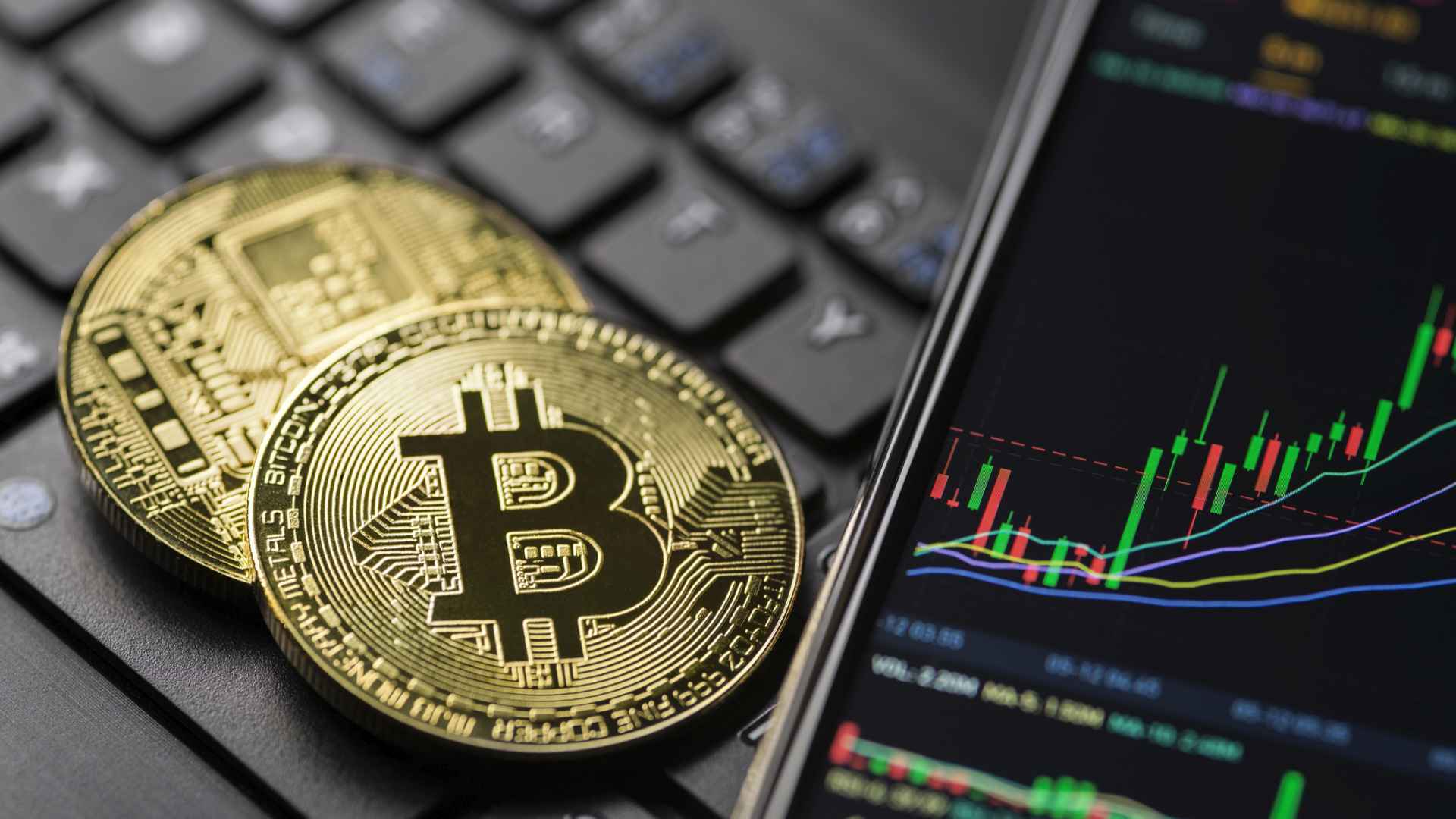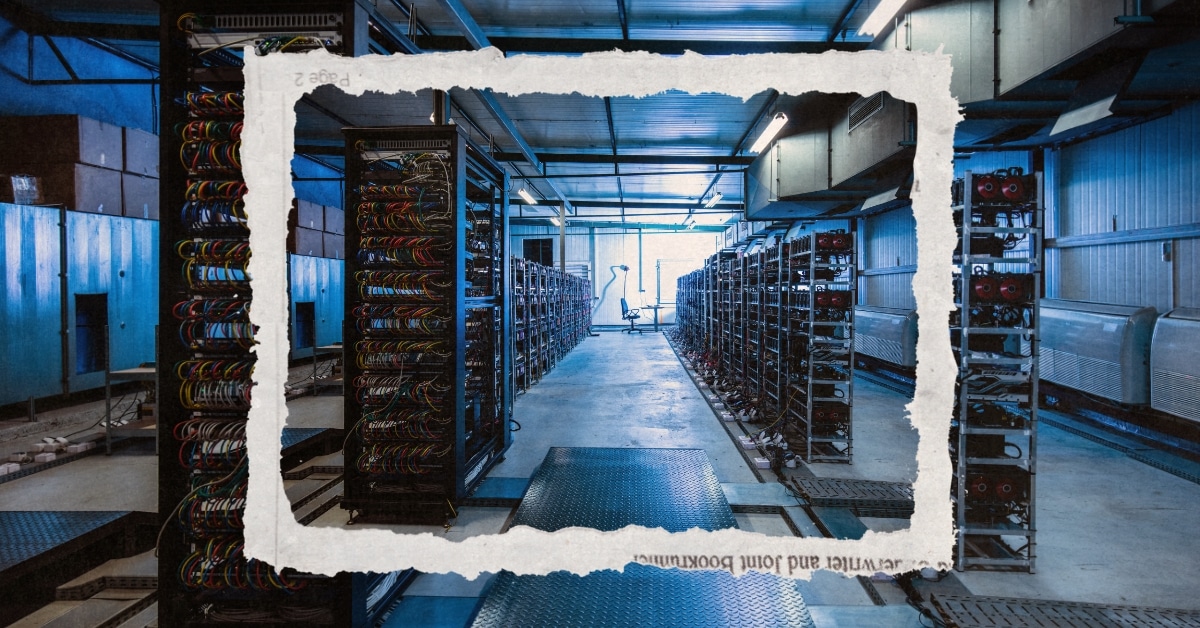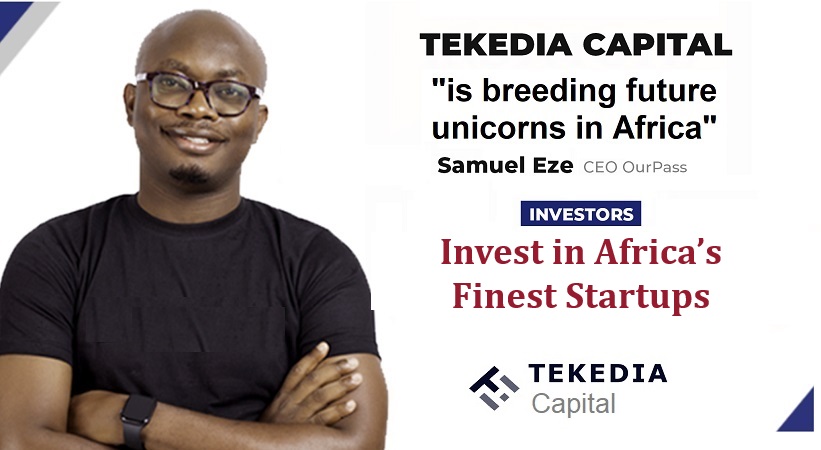News
10 Best Cryptocurrencies To Buy for July 2024

Cryptocurrency is digital money that isn’t managed by a central system, like a government. Instead, it’s based on blockchain technology, with Bitcoin being the most popular one. As digital money continues to gain traction on Wall Street, more and more options become available.
Check Out: 3 Genius Things All Wealthy People Do With Their Money
While you can use cryptocurrency to make purchases, most people treat it as a long-term investment. However, volatility makes investing in cryptocurrency risky, as demonstrated by the 2021-2022 freefall among cryptocurrencies, including stablecoins pegged to the U.S. dollar. It’s important to know what you’re getting into before you buy in.
10 Best Cryptocurrencies To Invest in for 2024
These are 10 of the best cryptocurrencies to invest in for 2024.
| Bitcoin (BTC) | $61,543.06 | $1.21 trillion |
| Ethereum (ETH) | $3,394.07 | $408.14 billion |
| Binance Coin (BNB) | $577.13 | $85.16 billion |
| Cardano (ADA) | $0.3852 | $13.77 billion |
| Polygon (MATIC) | $0.5493 | $5.43 billion |
| USD stablecoin (USDC) | $0.9999 | $32.25 billion |
| Avalanche (AVAX) | $28.25 | $11.13 billion |
| Chainlink (LINK) | $13.93 | $8.47 billion |
| Solana (SOL) | $114.52 | $66.84 billion |
| Dogecoin (DOGE) | $0.1235 | $17.9 billion |
Data is accurate as of June 30, 2024.
1. Bitcoin (BTC)
- Price: $61,543.06
- Market capitalization: $1.21 trillion
- Year-over-year return: 102.35%
Bitcoin has been around for the longest of any cryptocurrency. It’s easy to see why it’s the leader, with a price and market cap that are much higher than any other crypto investment options.
Many businesses already accept bitcoin as payment. Visa, for example, transacts with bitcoin. And after a long cryptocurrency hiatus, Stripe, through its partnership with OpenNode, allows merchants to settle transactions and convert payments to bitcoin. The larger banks have begun to incorporate bitcoin transactions into their offerings, as well.
In a major boon to bitcoin’s value as an investment asset, several companies, including Fidelity and BlackRock, finally got Securities and Exchange Commission approval for the spot bitcoin exchange-traded funds they’ve been gunning for. Some of those ETFs are expanding overseas. BlackRock’s iShares Bitcoin Trust ETF, for example, is now trading in Brazil, CoinDesk reported.
While investors have been able to indirectly invest in bitcoin since 2021, through exchange-traded funds that held bitcoin futures contracts, the SEC decision approved ETFs that hold bitcoin itself, giving investors a way to make direct investments in the cryptocurrency without having to buy or store their own coins.
It took just four days of trading for the iShares Bitcoin Trust ETF to reach $1 billion in assets, Reuters reported, and it since has grown to $18 billion. Fidelity’s Wise Origin Bitcoin Fund net assets stood at $11.08 billion on June 30.
Risks of Investing in Bitcoin
The value of bitcoin tends to fluctuate a lot. You may see the price go up or down thousands of dollars during any month. That certainly was true in 2022, as bitcoin prices correlated to the Nasdaq, as CNBC reported, challenging previous assumptions that bitcoin would serve as a hedge against inflation.
Prices since have soared, thanks in part to the SEC approval of bitcoin spot ETFs, but considering that they’re new funds, analysts can only speculate about the effect they’ll have on bitcoin values over the long term.
2. Ethereum (ETH)
- Price: $3,394.07
- Market capitalization: $408.14 billion
- Year-over-year return: 76.8%
Ethereum is a network that allows developers to create their own cryptocurrency and deploy smart contracts utilizing the network. While ethereum is far behind bitcoin in value, it’s also far ahead of the other competitors.
Even though it came out years after some other cryptocurrencies, ethereum has far exceeded its place in the market because of its unique technology. It’s currently the most popular blockchain and the second-largest cryptocurrency behind bitcoin.
The cryptocurrency world anticipated that ethereum would gain even more ground following the deployment of an upgrade, nicknamed “The Merge,” that shifted the Ethereum network to a proof-of-stake-based consensus. The upgrade was anticlimactic for ETH holders, but it did pave the way for Ethereum’s future evolution in terms of scalability, cost reductions and security enhancements.
Although ether doesn’t have the widespread acceptance bitcoin does, traditional companies are coming on board. Fidelity, for example, bulked up its tech workforce to create the infrastructure needed to offer ethereum custody and trading services to its customers, The Wall Street Journal reported. Other brokerages are likely to follow if they haven’t already. The SEC recently approved spot ether ETFs — making ethereum the only crypto besides bitcoin approved for trading within funds.
Risks of Investing in Ethereum
Although The Merge vastly improved Ethereum’s energy efficiency, it didn’t resolve slow transaction speeds or high gas fees. The platform currently has just one “lane” for conducting transactions. This can lead to transactions taking longer to process when the network is overloaded.
Transaction fees are also high. For improvement there, users must wait for Ethereum to implement “danksharding,” which will require several upgrades. According to the Ethereum development site, proto-sharding, an intermediate step in that process, will use rollups to reduce costs. Rollups bundle hundreds of transactions into one transaction on layer one and could reduce fees by up to 100x.
3. BNB (BNB)
- Price: $577.13
- Market capitalization: $85.16 billion
- Year-over-year return: 140.78%
Because of its performance over time, binance coin, now called BNB, has proven to be one of the more stable investment options — relatively speaking. It’s the native token on Binance, which is the world’s largest cryptocurrency exchange, and on Binance.US, the version U.S. residents must use. But despite its extensive functionality and the coin’s success in Binance sub-projects, BNB is still a highly volatile investment.
One thing working in BNB’s favor is that Binance burns, or destroys, coins once per quarter. The most recent burn, which occurred on April 24, reduced the coin supply by 1.94 million tokens — about $671 million worth at the time. It didn’t affect prices in the short term, but managing the number of tokens can have a positive effect over time by creating scarcity. BNB has a total supply of 147,583,201 — all of which are circulating.
It’s worth noting that Binance took a leading role in stabilizing the crypto industry following the collapse of the FTX exchange. It devoted $1 billion to a recovery fund established to keep struggling players afloat, CNBC reported.
Risks of Investing In BNB
Although BNB’s position as the native cryptocurrency on the world’s largest exchange “legitimizes” it in some respects, it also makes the currency especially vulnerable to regulatory issues. BNB lost 7.3% of its value in June 2022 when news broke of a Securities and Exchange Commission investigation into whether Binance followed proper procedures in its 2017 initial coin offering, Fortune reported. The SEC has accused Binance of other wrongdoing, including commingling investor funds and using Binance.US as an unregistered exchange. The SEC fined Binance $4.3 billion in November 2023, and the company’s CEO at the time, Changpeng Zhao, pled guilty to violating anti-money-laundering requirements, The Wall Street Journal reported.
4. Cardano (ADA)
- Price: $0.3852
- Market capitalization: $13.77 billion
- Year-over-year return: 33.41%
The Cardano network has a smaller footprint, which is appealing to investors for several reasons. It takes less energy to complete a transaction on Cardano than on a larger network like Bitcoin. This means transactions are faster and cheaper.
In 2021, Cardano launched a “hard fork,” an upgrade that increased functionality — in this case, enabling smart contract deployment. Another hard fork, this one called Vasil, launched in September 2022 and should improve the Cardano blockchain’s scalability, Mint reported.
Cardano recently launched a test version of a platform called AdaSwap, where developers can build decentralized finance apps. AdaSwap could elevate Cardano’s status as a Web3 network and drive up the price of its coin. While the coin is No. 10 in terms of market value, Cardano’s nonfungible-token protocol is the world’s second largest, according to U.Today.
Risks of Investing in Cardano
Even with a better network and the increased functionality smart contracts provide, cardano may not be able to compete with larger cryptocurrencies. Fewer adopters mean fewer developers. This isn’t appealing to most investors, who want to see a high adoption rate.
The platform has launched an incubator that funds African blockchain startups and could help Africa reach its potential as a major economy, but it remains to be seen whether it can live up to that potential.
Advice
Don’t be discouraged by fluctuations in the market. Your investment may lose money one day and make a profit the next. Instead of getting caught up in the day-to-day changes, look at the big picture.
5. Polygon (MATIC)
- Price: $0.5493
- Market capitalization: $5.43 billion
- Year-over-year return: -16.082%
Polygon was created by a development team that made significant contributions to the Ethereum blockchain platform. Polygon is designed for Ethereum scaling and infrastructure development, according to CoinMarketCap. As a “layer two” solution, it expands Ethereum into a multi-chain system, improving transaction and verification speed.
Polygon has backing from the Binance and Coinbase cryptocurrency exchanges. Its token, matic, is used for payment services, transaction fees and as a settlement currency.
In July 2022, Polygon announced in a press release that it had launched Polygon zkEVM, “the first Ethereum-equivalent scaling solution that works seamlessly with all existing smart contracts, developer tools and wallets.” It does this with a type of cryptography called zero-knowledge proofs, which lower transaction costs and increase throughput.
Polygon hosts tens of thousands of decentralized apps, including some from companies like Meta and Stripe and, more recently, Credit Suisse and Deutsche Bank. In addition, Polygon fully supports the tether stablecoin, which could contribute to the network’s future growth. Another plus is its investment in carbon neutrality, which occasionally has prompted price rallies.
Risks of Investing In Polygon
Polygon’s layer-two solution is designed to overcome Ethereum’s speed issues. However, future Ethereum improvements could eventually result in faster transaction speeds than Polygon provides, eliminating Polygon’s primary advantage.
6. USD Stablecoin (USDC)
- Price: $0.9999
- Market capitalization: $32.25 billion
- Year-over-year return: -0.02%
Stablecoins are cryptocurrencies that are pegged to fiat currencies such as the U.S. dollar, South Korean won and the International Monetary Fund’s Special Drawing Rights currencies. You can use stablecoins as an alternative to making cash transactions, as a bridge between two coins that can’t be directly paired for trading or as a comparatively stable holding to diversify your cryptocurrency portfolio.
Stablecoin developers maintain reserves to cover the value of their circulating coins, which helps keep the coin prices stable. However, the reserves don’t always consist strictly of the fiat currency to which the coins are pegged. Tether, for example, backs 100% of its circulating coins with reserves, but a small percentage of its reserves are bitcoins (3.45%), secured loans (4.29%) and “other investments” (3.45%).
USD stablecoin is different because it’s fully backed by cash and short-term U.S. Treasury and Treasury repurchase agreements, which are considered cash-equivalent because they’re backed by the full faith and credit of the U.S. government.
Risks of Investing in USD Stablecoin
All stablecoins have some risk of depegging — losing their peg to the currency that backs them — Fidelity warns. The risk is smaller for coins backed by fiat currency, but it’s not nonexistent.
7. Avalanche (AVAX)
- Price: $28.25
- Market capitalization: $11.13 billion
- Year-over-year return: 118.67%
Avalanche is a relatively new “layer one” foundational blockchain that can execute smart contracts. It was founded as an Ethereum competitor by Ava Labs and computer scientists at Cornell University, one of whom, former professor Emin Gün Sirer, is a veteran in cryptographic research, according to CoinMarketCap.
Avalanche’s individual blockchains can validate transactions independently. This makes Avalanche scalable and able to handle large volumes of transactions — up to 6,500 per second. As a result, it’s increasingly popular among Ethereum projects, U.S. News reported.
AVAX began trading in 2020, in a 24-hour initial coin offering. Its price has fluctuated from a low of $8.70 to a high of $65.25 over the past year. As of June 30, the coin trades for $28.25.
Risks of Investing in Avalanche
Sirer introduced the cryptocurrency via a white paper in 2018. Its launch took place in 2020. With such a short history, avalanche doesn’t have a track record for comparison, making it a riskier investment for potential buyers.
8. Chainlink (LINK)
- Price: $13.93
- Market capitalization: $8.47 billion
- Year-over-year return: 121.73%
Chainlink uses a decentralized oracle network to facilitate secure interactions between blockchains and external data feeds, events and payment methods the developers hope will allow smart contracts to become the dominant form of digital payment, according to CoinMarketCap.
One thing working in Chainlink’s favor is a strategic partnership with Google, under which Google uses Chainlink’s protocol to connect users to its cloud services.
Chainlink is also the choice for the new inflation index from decentralized finance company Truflation, built to serve as an alternative to the consumer price index. Whereas the CPI measures inflation using survey data, Truflation’s index uses 10 million data points from over 40 different sources to measure inflation more dynamically, accurately, objectively and transparently. While Truflation hasn’t overtaken the CPI, it is a frequently cited source of inflation data.
Chainlink Labs’ advisors include former Google CEO Eric Schmidt, DocuSign founder Tom Gonser and former LinkedIn CEO Jeff Weiner.
Risks of Investing In Chainlink
Despite its proven utility and support from major players, chainlink has experienced the same kind of volatility as other cryptocurrencies.
9. Solana (SOL)
- Price: $144.52
- Market capitalization: $66.84 billion
- Year-over-year return: 656.03%
Solana bills itself as a blockchain built for mass adoption, with use cases that include finance, nonfungible tokens, payment processing and gaming. It’s one of several Ethereum killers — Ethereum-based networks that improve on Ethereum’s cost and efficiency. Its fast speed and comparatively low costs are the result of a proof-of-history consensus, which creates a clock that synchronizes computers on Solana’s network. That synchronization has the potential to process transactions as much as 10,000 times faster than systems like Bitcoin and Ethereum.
Solana is one of the first blockchains to partner with a major financial institution to process payments — in this case, the partner is Visa. Meta, Stripe, Shopify and Google also have projects on Solana.
Risks of Investing In Solana
Solana is prone to network outages, according to AMBCrypto. The most recent one, which occurred in February, resulted in a 4% dip in solana prices. Although the coin rebounded quickly, growth depends on reliability, and giving developers any reason to doubt Solana’s could be detrimental.
10. Dogecoin (DOGE)
- Price: $0.1235
- Market capitalization: $17.9 billion
- Year-over-year return: 87.51%
Dogecoin is a meme coin whose primary claim to fame is that Elon Musk likes it. That means its value is based on sentiment rather than utility. However, that sentiment is a powerful force. The community that has sprung up around Dogecoin is what drives it, and at various times, that community has created major surges.
DOGE prices have ranged from a low of $0.05747 to a high of $0.2266 over the past year — a 294% difference. The coin reached an all-time high of $0.7376 in 2021.
Risks of Investing In Dogecoin
Dogecoin’s value is based purely on hype. Despite having paid off brilliantly for some, it’s a risky bet.
Advice
Don’t settle on any number of cryptocurrency investments without continuing to learn about the market. A new cryptocurrency network could easily climb the ranks and emerge as a leader above other platforms. As an investor, the smartest thing you can do is to stay abreast of market happenings.
Rating the Top Cryptocurrency Choices
Run a quick online search and you’ll find dozens of recommendations for how to invest in cryptocurrency. In choosing the best cryptocurrencies to invest in, GOBankingRates considered the following factors.
Longevity
How long has the cryptocurrency been around? New cryptocurrencies aren’t immediately ruled out, but having historical data for comparison helps you see how a cryptocurrency has performed up until now.
Track Record
If you see stability in prices, that’s a good sign. If you notice that the cryptocurrency is gaining traction and becoming more valuable with time, that’s even better.
Good To Know
Past performance is not indicative of future performance. At any time things can change, and an investment may perform better or worse than it has in the past.
Technology
How does the platform compare to others in terms of usability and security? The first thing you want to look for is the speed at which transactions occur. The network should be able to handle transaction traffic with ease.
You also want to make sure your investment is secure. Most cryptocurrencies use blockchain technology, making all transactions transparent and easy to track. Blockchain technology doesn’t necessarily make it harder for hackers to steal your cryptocurrency. It does make it easier to track your investment so it can be recovered instead of being lost following fraud.
Adoption Rate
How many people are investing in the cryptocurrency you’re considering? When you see a high level of adoption, that means the cryptocurrency has better liquidity. Trading, selling or spending will be easier in the future.
Final Take
There’s no question about it: Cryptocurrencies are here to stay. The question becomes: Where is the best place to invest your money in the market?
As you decide which cryptocurrency is the best investment for you, here are some other things to keep in mind:
- The speed at which transactions are completed
- The fees associated with transacting
- The ability to use your cryptocurrency for regular purchases and bank transfers
If you’re strictly looking to invest without transacting within the network, remember that cryptocurrency isn’t a get-rich-quick scheme. Instead, you should consider it a long-term investment.
FAQ
Cryptocurrency is a speculative investment, so it’s important to make informed decisions about how to invest. These frequently asked questions can help you decide where crypto fits in your portfolio.
- Which is the best crypto to invest in right now?
- It’s important to remember that every cryptocurrency is a speculative investment with unique benefits and risks that might make it a good choice for one investor and a terrible choice for another. That said, the GOBankingRates roundup of the 10 best includes bitcoin, which is among the “safer” cryptocurrency investments because of its widespread use, and chainlink, which is inexpensive and has the backing of some of the most respected names in technology.
- Which crypto is best for the future?
- It’s impossible to forecast what will happen with a particular cryptocurrency in the future because cryptocurrencies are highly volatile and vulnerable to many factors, including economic conditions, the overall markets, regulation and new developments. All of the currencies listed in this roundup have the potential for long-term appreciation. The Polygon blockchain, for example, overcomes some of Ethereum’s limitations, and even though it’s relatively new, it has proven utility as the host of tens of thousands of apps. That gives its token a reasonable shot at being a future winner.
- Which crypto has the most potential?
- Blockchain technology and cryptocurrencies are evolving too quickly for anyone to know for sure which has the most potential. However, chainlink stands out as a potential market leader because of its ability to pull in data from outside the blockchain. Furthermore, its partnership with Google and A-list team of advisors could help Chainlink avoid the kind of missteps that have hampered other blockchains and their tokens.
- What cryptocurrency should a beginner invest in?
- Bitcoin is a good beginner’s choice, especially for new investors willing to accept a high degree of risk. It’s the most widely accepted and is still the standard by which other coins are measured.
GOBankingRates’ Crypto Guides
Daria Uhlig contributed to the reporting for this article.
Data is accurate as of June 30, 2024, and is subject to change.
News
US Cryptocurrency Rules Delayed by ‘Never-Ending’ Lawsuits

Ripple CEO says cryptocurrency industry still seeking regulatory clarity from US
Speaking to Bloomberg News on Wednesday (July 17), Author: Brad Garlinghouse he said America is behind behind other countries which have already adopted cryptocurrency regulations.
“What we’re seeing, where it’s the UK, Japan, Singapore… even the European Union, more than two dozen countries have come together to provide a framework for cryptocurrency regulation,” Garlinghouse said.
“It’s frustrating that we as a country can’t get that regulatory framework in place. And instead, we have this never-ending lawsuit coming from the SEC that doesn’t really address the problem.”
Ripple has been the target of some of these legal disputes. Securities and Exchange Commission (SEC) sued the company in 2020, accusing it of conducting a $1.3 billion operation offering of unregistered securities tied to its XRP token.
However, last year a judge ruled that only Ripple’s institutional sales of XRP, not retail sales, violated the law, a decision widely seen as a victory for the cryptocurrency industry.
As PYMNTS noted at the time, that ruling has “far-reaching repercussions impact across the digital asset ecosystem, which has long maintained that its tokens do not represent securities contracts.”
However, Garlinghouse told Bloomberg on Wednesday that the company cannot wage multimillion-dollar legal battles over each token.
He spoke to the news agency from the Republican National Convention in Milwaukee, where the party is backing the candidacies of former President Donald Trump and Ohio Sen. J.D. Vance, both of whom are considered pro-cryptocurrency.
But Garlinghouse argued that cryptocurrencies “should not be a partisan issue,” and noted that he had recently attended a conference in Washington that included Democrats, including White House officials.
“I think they were there, listening to the industry… it was refreshing to start having that conversation,” she said.
President Joe Biden earlier this year he vetoed a measure which would have ended the SEC’s special rules for crypto-asset custodians. This legislation was supported by both the digital asset industry and the banking industry.
Ripple early this year donated $25 million to the cryptocurrency industry’s super PAC Fair Smoothiewith Garlinghouse stating at the time that such donations would continue every year, as long as the industry had its detractors.
Second Open SecretsWhich monitor spending For campaigns, the PAC has spent $13.4 million this year, much of it to help defeat Rep. Katie Porter’s (D-Calif.) U.S. Senate campaign.
News
The Future of Cybersecurity in the Cryptocurrency Industry

The cryptocurrency space has had a tumultuous journey, with its fair share of ups and downs. As we look to the future, one area that remains a constant focus is cybersecurity. The digital nature of cryptocurrencies makes them inherently vulnerable to cyber threats, and as the industry evolves, so does the landscape of potential risks.
In 2022, the cryptocurrency market faced significant challenges, with over $2 trillion in market value lost. This event served as a wake-up call for the industry, highlighting the need for robust cybersecurity measures. The future of cryptocurrency security is expected to see a shift towards more regulated and established institutions taking the reins of crypto technology and blockchain infrastructure.
The decentralized nature of cryptocurrencies offers numerous benefits, such as transparency and financial inclusion. However, it also introduces unique security challenges. The risk landscape is filled with threats such as hacking, phishing, ransomware attacks, malware, and social engineering. These threats not only lead to financial losses, but also damage the reputation and trust within the cryptocurrency ecosystem.
Mini-MBA Tekedia edition 15 ((September 9 – December 7, 2024) started recordings; Register today for discounts reserved for early bird customers.
Tekedia AI in Business Masterclass Opens registrations Here.
Join the Tekedia Capital Syndicate and IInvest in Africa’s best startups Here.
The decentralized nature of cryptocurrencies offers many benefits, but it also presents unique security challenges. Cyber risks such as hacking, phishing, and ransomware pose threats to the integrity of digital assets. The infrastructure that supports cryptocurrencies is not immune to vulnerabilities, including smart contract flaws and exchange hacks.
To address these vulnerabilities, the infrastructure that supports cryptocurrencies must be strengthened. Smart contract vulnerabilities, exchange hacks, wallet breaches, and flaws in the underlying blockchain technology are significant concerns that must be addressed to ensure the security and integrity of digital assets.
As cybercriminal tactics and techniques become more sophisticated, the cryptocurrency industry must stay ahead of the curve. The future will likely see more targeted attacks, exploiting weaknesses in infrastructure, networks, and human factors. This requires a proactive and multifaceted approach to cybersecurity.
To mitigate these risks, several measures must be adopted:
Strengthening security measures: Developers, exchanges, and wallet providers must improve security protocols, use strong encryption, implement multi-factor authentication, and conduct regular security audits.
Education and awareness: Users should be educated on best practices for protecting their digital assets, including using strong passwords, recognizing phishing attempts, and using hardware wallets for secure storage.
Looking ahead, the cryptocurrency industry is expected to see an increased focus on robust security measures. Blockchain projects and exchanges are likely to invest in advanced encryption techniques and decentralized storage solutions to protect user assets. The future impact of cyber risk on cryptocurrencies will depend on the collective efforts of stakeholders to address vulnerabilities and strengthen security measures.
Collective efforts by stakeholders in the cryptocurrency space are crucial to address vulnerabilities and strengthen security measures. While challenges persist, advances in cybersecurity technologies and practices offer hope for a more secure and resilient cryptocurrency ecosystem.
The future of cybersecurity in the cryptocurrency industry depends on finding a balance between innovation and regulation. It requires a collaborative effort from all parties involved, from developers to end users, to create a secure environment that fosters trust and growth in the industry. As we move forward, it is critical that lessons learned from past events guide the development of stronger security measures, ensuring the longevity and stability of cryptocurrencies as a vital part of the modern economic toolkit.
Like this:
Like Loading…
News
Bullish XRP and RLBK price predictions rise, outpacing the broader cryptocurrency market, prompting Shiba Inu holders to switch!

Bitcoin’s one-week surge from $60,000 has pushed other cryptocurrencies into an uptrend. However, for many altcoins, this trend has been temporary. Altcoins such as XRP and Shiba Inu (SHIB) have experienced price drops. However, Rollblock, a new altcoin on the Ethereum blockchain, has thrived during this period, attracting thousands of investors looking for long-term growth.
XRP’s Nearly 30% Growth Over Last Week Drops as Selling Pressure Increases
XRP is seeing further price decline as Ripple investors withdraw their profits from the token. The surge in XRP’s price to $0.64 in the past week has provided investors with a perfect opportunity to increase their returns in the short term. With the ongoing sell-off in XRP, XRP has jumped over 8% in the past day and is now trading at $0.59. However, analysts tracking XRP indicators predict that XRP could still extend its gains by over 30% in the coming weeks.
Shiba Inu (SHIB) marks its third consecutive day of losses
Shiba Inu (SHIB) is in a period of adjustment after a week of strong gains. In the last 24 hours, SHIB has seen a jump of over 7%, reflecting a natural market fluctuation. Analysts are observing a death cross on the Shiba Inu chart, which historically signals the potential for future opportunities as the market stabilizes. As investors explore new possibilities, some are diversifying into promising altcoins like Rollblock (RBLK) to strategically rebalance their portfolios and capitalize on the emerging trend.
Rollblock (RBLK) Up Another 7% as New Investors Join Pre-Sale
Rollblock (RBLK) has taken the cryptocurrency market by storm, having attracted investors from more popular altcoins like Shiba Inu (SHIB) and XRP. Rollblock’s growth is attributed to its utility in the $450 billion global gaming industry.
Rollblock aims to use blockchain technology to bridge the gap between centralized and decentralized gambling. With blockchain technology, Rollblock secures every transaction in its online casino, providing transparency and convenience to millions of players who are uncomfortable placing bets on other iGaming platforms.
This innovative use of blockchain technology in the industry has grown Rollblock to over 4,000 new users in less than two months. With plans to add sports betting, this number is expected to grow exponentially in Q3.
Rollblock uses a revenue sharing model that splits up to 30% of its casino’s weekly profits with token holders. This happens after Rollblock buys back $RBLK from the open market and uses half of it for rewards. The other half is burned to increase the price of $RBLK.
Rollblock price has seen four increases in the past month with $RBLK tokens now selling for $0.017. Analysts predict that at the current growth rate, Rollblock could increase by over 800% before the presale ends. For investors looking for a long-term token with growth potential, phase four is the best time to buy Rollblock before its price skyrockets!
Discover the exciting Rollblock (RBLK) pre-sale opportunities now!
Website:https://Rollblockpresale.io/
Social: https://linktr.ee/Rollblockcasino
No spam, no lies, just insights. You can unsubscribe at any time.
News
Texas Crypto Miners Turn to AI as Crypto Declines

As cryptocurrency mining becomes less profitable, Texas cryptocurrency mining companies are switching to supporting artificial intelligence companies.
Bitcoin miners, with their sprawling data centers and access to significant energy resources, are ideally suited for computationally intensive AI operations, and as cryptocurrency mining becomes less profitable, companies see this shift as a logical answer to their problems.
On Thursday, Houston-based Lancium and Denver-based Crusoe Energy Systems announced a multibillion-dollar deal to build a 200-megawatt data center near the West Texas city of Abilene to support advanced artificial intelligence applications such as medical research and aircraft design, CNBC reported. The plant represents the first phase of a larger 1.2 gigawatt project.
Lancium and Crusoe’s move into AI mirrors a broader trend among bitcoin miners. The combined market capitalization of the top U.S.-listed bitcoin miners hit a record $22.8 billion in June. Companies like Bit Digital and Hut 8 are diversifying into AI, with Bit Digital securing a $92 million annual revenue deal to supply Nvidia GPUs and Hut 8 raising $150 million to expand its AI data center.
But the growing popularity of these operations also presents challenges, particularly for the Texas power grid. Last month, the Electric Reliability Council of Texas announced that the state is expected to nearly double its energy production by 2030 to meet the high energy demands of data centers and cryptocurrency operations.
Lieutenant Governor Dan Patrick expressed concern about the projections.
“Cryptocurrency miners and data centers will account for more than 50% of the additional growth. We need to take a close look at these two sectors,” He wrote on Twitter/X. “They produce very few jobs compared to the incredible demands they place on our network. Cryptocurrency miners could actually make more money selling electricity to the network than they do from their cryptocurrency mining operations.”
Analysts predict significant growth in data center power capacity, which is expected to account for up to 9% of U.S. electricity consumption by 2030.
The operations also pose challenges for nearby cities. Earlier this month, TIME reported that a crypto-mining facility was seriously compromising the health of residents in the city of Granbury. TIME reported more than 40 people with serious health problems, including cardiovascular disease, high blood pressure and hearing loss. At least 10 of the residents needed to go to the emergency room or an urgent care facility.
The disturbances were caused by the extreme noise generated by the crypto-mining facility’s fans, which are used to keep the machines cool. While the proposed data center in Abilene would use liquid cooling systems, it’s still unclear whether the facility’s operations would pose a health risk to local residents.
-

 Nfts1 year ago
Nfts1 year agoShardLab Launches ZK-Based Tool for Digital Identity and NFT Vouchers
-

 News1 year ago
News1 year agoWallet recovery firms are abuzz as stranded cryptocurrency investors panic in the bitcoin boom
-

 Bitcoin1 year ago
Bitcoin1 year agoBitcoin, Ethereum, Solana and Cryptocurrency Markets Look Ready to ‘Send’ as Stars Align, According to Investor Chris Burniske
-

 Altcoins12 months ago
Altcoins12 months agoThree Altcoins Poised for Significant Growth in 2024: ETFS, OP, BLAST
-

 Altcoins12 months ago
Altcoins12 months agoAccumulate these altcoins now for maximum gains
-

 Nfts1 year ago
Nfts1 year agoOG Crypto Artist Trevor Jones Unveils Groundbreaking Collection of Ordinals | NFT CULTURE | NFT News | Web3 Culture
-

 Bitcoin1 year ago
Bitcoin1 year agoBillionaires are selling Nvidia stock and buying an index fund that could rise as much as 5,655%, according to some Wall Street analysts
-

 Videos9 months ago
Videos9 months agoKamala just won the boner! [Bad For Crypto]
-

 Videos1 year ago
Videos1 year agoLIVE FOMC 🚨 Could be CATASTROPHIC for Altcoins!
-

 News1 year ago
News1 year agoA Guide for Newcomers & Beginners – Forbes Advisor
-

 Videos1 year ago
Videos1 year agoAttention: a historically significant BITCOIN signal has just appeared!
-

 Videos1 year ago
Videos1 year agoSTOCK MARKET FUD! ⚠️ [Why This Is GREAT For Bitcoin Traders!]














